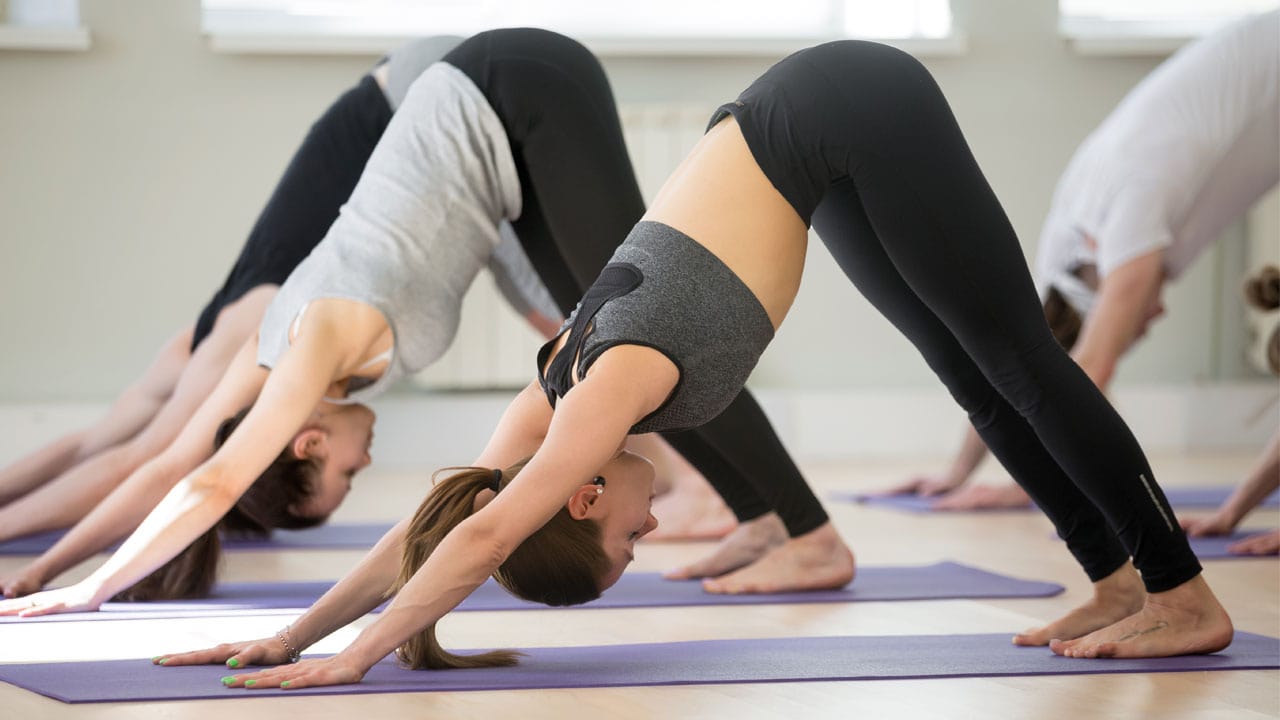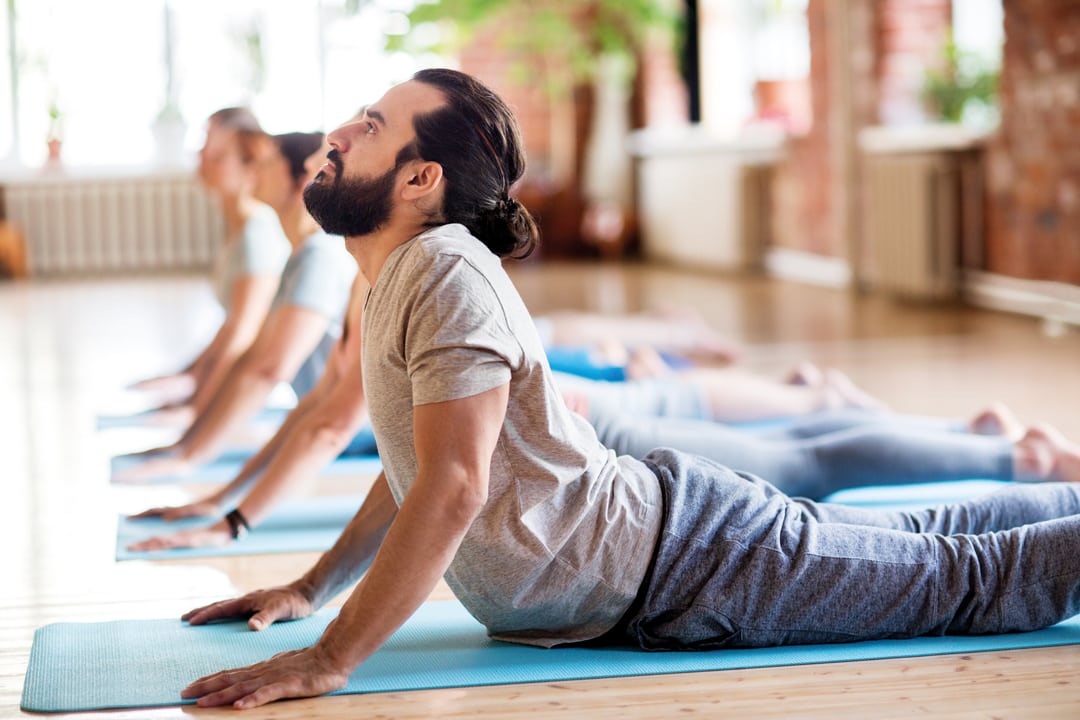
Best yoga poses for beginners
Allie Williams, an expert instructor at VAHA, shares her top yoga poses for beginners to improve flexibility and strength
As a yoga teacher, one of the things I hear most often is: “Oh I’d like to try yoga, but I’m so bad, I’m not at all flexible!” I always respond that there’s no such thing as being bad at yoga, and that flexibility is not important — yoga asana (only one of the discipline’s so-called ‘eight limbs’) is a practice of linking breath and movement with the intention of calming the mind. Difficulty of postures, intensity of the practice and ability of the practitioner are not important — and indeed, if we could do everything perfectly right away and had unlimited strength and flexibility, it wouldn’t be yoga.
But despite my reassurances to nervous yogis, I remember that feeling of stepping into my first class as if it were yesterday. I had no idea what was happening, I’d never heard Sanskrit before and I couldn’t step my foot from a downward facing dog to the front of my mat due to my screaming hamstrings and hip flexors. I remember gazing in astonishment at the class around me, completely flummoxed that they knew what to do when the teacher called out seemingly gibberish words like ‘chaturanga’ or ‘viravadransa’.
Incorporating these simple poses into classes for beginners, alongside a gentle reminder that child’s pose or sukhasana is always an option, will help to create an inclusive, calm atmosphere for first time yogis. These simple poses are accessible to practitioners of all levels, but deliver on improving both strength and flexibility.
Child’s Pose (Balasana)
Balasana releases the hips, the lower back and abdominal muscles and stretches the shoulders. It’s also a deeply grounding pose as it gets the forehead and belly to the mat, and a restorative pose as the hips are higher than the head and heart. Offering balasana as an option for yogis to return to helps to empower them to take control of their own practice and to continue to feel connected to the energy in the room, even whilst honouring their own pace and body.
Breathing Deeply In Easy Pose (Sukhasana)
Sukhasana, or easy pose, is simply sitting cross legged. This is often the pose used for pranayama (breathing) techniques and to encourage a connection to the breath at the beginning and end of a class.
Like balasana, sukhasana is a grounding pose, with sit bones and feet creating a connection to the floor or mat below. It’s also a hip opener, as the hip flexors must relax down — for those with tighter hips and hammies, placing a block under the sit bones can create more space. The pose allows for relaxed shoulders and an open chest for more expansion into the chest and lungs with each inhale. Beginning the class by asking students to connect to their breath and giving sukhasana as an option to return to helps to set an intention of working with breath, and an option to return to that breath at any point.
Mountain Pose (Tadasana)
Similar to sukhasana, tadasana is a grounding pose which allows a connection to the breath. The connection of firmly placing the feet on the mat, distributing the weight evenly, finding a long spine and allowing the body to stay active but relaxed allows deeper breath through more expansion into the chest and lungs. Pressing the feet into the mat allows for an activation of the leg muscles, glutes and core. Tadasana is a pose to set the tone and to arrive into the space through engagement and activation before movement.
Downward Facing Dog (Adho Mukha Svanasana)
Although this pose is one of the most frequently taught and cued yoga poses, it can be very difficult for new yogis (and indeed, even for experienced yogis!) to access. This is partially because so much is going on in the pose. The primary focus is for the spine to lengthen, which requires the core to be engaged and the neck to relax. The biceps engage and externally rotate while the scapula engages and wraps back (supported by engaged seratus and rhomboids so the side body is active and supporting you). Fingers grip the mat so wrists can support you while forearms internally rotate, and quads engage so that hamstrings can lengthen. On top of all of this, the arches of the feet work, which improves foot flexibility. When done correctly, downward facing dog activates the full body, lengthening and strengthening simultaneously. Beginners who come to yoga with no bad habits in the pose are excellently positioned to learn good body position and correct engagement, which will avoid injuries and difficulties longer term — so it’s important to take the time to develop this pose.

Low Lunge (Anjaneyasana)
Low lunge stretches hip flexors and spine while increasing hip flexor strength, alongside conditioning glutes and thighs. The pose also stretches quads, engages glutes and core and lengthens the spine. Arm variations also allow for shoulder opening. This is an excellent pose for loading glutes and leg muscles to allow for more effective lengthening.
High Lunge (Ashta Chandrasana)
Similar to a low lunge, high lunge targets hamstring and glute activation while stretching calves and hip flexors. It builds strength while lengthening and requires core engagement and shoulders to relax. Keeping the heel off of the mat (as opposed to a warrior I, which can stress knees when done incorrectly and requires more flexibility) makes this pose more accessible to beginners, while keeping the same benefits.
Cobra (Bhujangasana) & Locust (Shalabhasana)
A common cause of back pain is tightness in the thoracic and cervical spine despite flexibility in the lumbar. Our lumbar naturally has more flexibility and modern life (being seated at desks which we hunch forward over for many hours a day) often contributes to a tight thoracic spine and restricted range of motion and engagement in the cervical and thoracic spines. Both cobra and locust pose work the entire spine, lengthening and strengthening everything from the neck to the scapula down to the hamstrings. Cobra focuses more on lengthening the spine through engaging leg muscles, while locust is a full back body activation to create strength in hard to reach muscles and allow for safer stretching.
Modified Plank & Low Plank
Like downward dog, chaturanga is one of the most frequently cued poses in any Ashtanga based practice. It can also be similarly difficult for beginners to access. Teaching correct engagement of the core, glutes and leg muscles while keeping the scapula and back body muscles relaxed but engaged requires engagement through the hands and fingers, external rotation of the biceps so that the side body can engage and the scapula to wrap back so the seratus and rhomboids can support.
Teaching beginners to take the knees down so that they can focus on this activation in the core and back body will increase strength more effectively while minimising risk of injury.
Seated Tree (Janu Sirasana)
Forward folds stretch the back body from head to heels, while soothing the nervous system, calming the body and mind. Janu Sirasana specifically relieves tight hamstrings, stretching hamstrings, hips and groin muscles while lengthening the spine. Forward folding one leg at a time is more accessible and less intense than a traditional seated forward fold.
Bridge Pose (Setu Bandha Sarvāṅgāsana)
Bridge strengthens the glutes to reduce the risk of injury and misalignment while extending hip flexors and spine. It’s an effective pose that can be used both to activate glutes and hamstrings for safer and more effective stretching within a warm-up sequence, and to lower the heart rate by raising the hips and heart above the head, relaxing and cooling the body down while lengthening the spine.
Like all backbends, bridge is a heart-opening pose with many variations (one legged, supported) which can level the pose up or down. It’s also a modification for urdhva dhanurasana.
Easy Supine Twist (Supta Matsyendrasana)
Twisting stimulates blood circulation and relieves tension in the abdominal muscles. It promotes digestion by creating compression (stopping the blood flow) before fresh blood flow delivers oxygen and nutrients to the core when the twist is released.
Twists also open the chest, shoulders and back, while strengthening the spine by encouraging a full range of movement. Supine twist is the most easily accessible of all twisting poses. It targets the back muscles and glutes, while also opening the hips and obliques and releasing the lower spine. The chest stretch also makes it a heart opener, which lifts the mood.
Allie Williams is a yoga instructor for VAHA (uk.vaha.com), the UK’s first interactive fitness mirror


